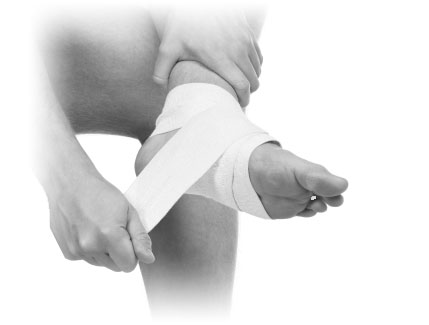Physiotherapy Treatment
 What is Physiotherapy?
What is Physiotherapy?
The Chartered Society of Physiotherapy (CSP) defines Physiotherapy as a health care profession concerned with human function and movement and maximising potential. It uses physical approaches to promote, maintain and restore physical, psychological and social well-being.
On assessment the physiotherapist will undertake a detailed, subjective account of out client’s history and presentation of pain patterns, including the impact of any treatment to date (past / current). An objective, physical examination will assist in this respect and enable the physiotherapist to decide upon appropriate treatment options. These will be discussed with our clients in order to agree achievable goals / outcomes of the intervention. In the event that the physiotherapist considers further
investigations an appropriate referral will be made.
Key modalities of physiotherapy for acute pain may include a variety of techniques as listed below. Not all will be suitable for every client and the physiotherapist will be able to select a suitable approach to address the client’s particular clinical symptoms.
When working with chronic or persistent pain, the physiotherapist’s role may change to reflect a more ‘hand’s off’ treatment approach, again in accordance with the client’s presentation on assessment.
Physiotherapy Treatment Modalities for pain
Advice and Education |
The physiotherapist will provide education about the nature of the pain experienced, causation and the treatment required. They will give advice on how to manage pain on “good” days as well as days which present with “flare ups”. |
|
Assessment of Pain and Pathologies |
A full subjective and objective assessment will be carried out to ensure the patient receives the best treatment and to devise accurate goals. |
|
Manual therapy |
This is a hands-on approach where the physiotherapist may want to carry out mobilisation or manipulations of certain joints to reduce any spasm and stiffness. |
|
Soft tissue techniques |
In many cases physiotherapists use soft tissue techniques such as massage or trigger point therapy to reduce joint or muscle spasm. |
|
Relaxation |
Muscle tension can increase the experience of pain. Using relaxation can decrease these symptoms and therefore reduce pain. Physiotherapists will teach patients to use relaxation techniques to reduce tension. |
|
Goal Setting |
Goal setting is an important part of the treatment process. The goals will be set by patient and physiotherapist together to ensure they are specific, measurable, achievable, realistic and timely (SMART). These goals will consist of anything from returning to work, back to playing sport to something as simple as caring for yourself. |
|
Range of movement exercises |
An active exercise programme devised for each individual will follow after the assessment process. This could be to increase the range of movement of a specific joint(s) such as neck, lower back, shoulders, hips or knees. The physiotherapist will teach these exercises so the patient can continue them at home. A full description of the exercises will be provided. |
|
Strengthening exercises |
Strengthening exercises might be helpful during the Pain Management Programme to strengthen around a specific joint(s) to protect that area and to make everyday activities easier. These exercises will be provided so the patient can continue them at home and manage their pain better. |
|
TENS |
Transcutaneous nerve stimulation or TENS is a method of electrical stimulation, which aims to provide pain relief by specifically stimulating fast conducting nerves and therefore taking advantage of the body's pain gate mechanism and/or the opioid system. There are different methods of applying TENS depending on your pain and your physiotherapist will select the most appropriate setting for you. TENS may be used as an adjunct to your pain management programme. TENS consists of placing sticky pads on the skin to specific areas of the body. A small electrical current runs through the skin and produces a “tingly” sensation. This is applied for approximately 10-30 minutes at a time. Your physiotherapist will guide you exactly on how to use TENS. |
|
Acupuncture |
Acupuncture is a Chinese treatment that dates back some thousands of years and achieves a therapeutic effect by introducing sterile, disposable needles into specific points on the surface of the body. In Chinese medicine, the person is regarded as being made up of three facets: body, mind and spirit. Each part is very important and is closely related to the other two. If problems arise in one part, this can affect the general well-being and can affect the balance of the other facets. The Chinese approach to treatment is treating these meridians by stimulation specific acupuncture points depending on your symptoms. The Western view is that acupuncture can influence the release of natural painkillers called endorphins. Acupuncture points are also thought to be linked to myofascial trigger points in muscles (muscle spasm) that can generate some severe pain responses. |




